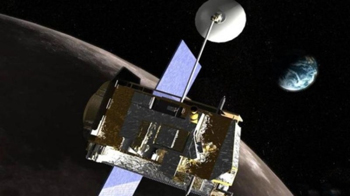Washington, Mar 10: India's first unmanned mission to the moon- Chandrayaan 1- which was believed lost, is still orbiting the moon, say NASA scientists.
 The Chandrayaan-1, which cost $79 million, was launched in 2008 to map the moon's surface and look for precious metals. It was assigned a two-year mission. Scientists at the Indian Space Research Organisation (ISRO) lost contact with Chandrayaan-1 a year after it was launched.
The Chandrayaan-1, which cost $79 million, was launched in 2008 to map the moon's surface and look for precious metals. It was assigned a two-year mission. Scientists at the Indian Space Research Organisation (ISRO) lost contact with Chandrayaan-1 a year after it was launched.
Now, scientists at NASA have successfully located the spacecraft still circling some 200 kilometres above the lunar surface.
Finding the spacecraft required some "detective work because the last contact with the spacecraft was in August of 2009," said Marina Brozovic, a radar scientist.
The Chandrayaan-1 spacecraft is very small, a cube about 1.5 meters on each side - about half the size of a smart car.
It was found using an interplanetary radar which helps observe small asteroids several million miles from Earth.
Finding a derelict spacecraft that has not been tracked for years and is as far as the moon is tricky because the moon is riddled with mascons (regions with higher-than-average gravitational pull) that can dramatically affect a spacecraft's orbit over time, and even cause it to have crashed into the Moon.
Chandrayan-1 reported evidence of large quantities of water on the moon's surface in 2009. In 2014, India triumphed with its unamend spacecraft reaching Mars at a cost of $74 million, a fraction of the $671 million spent by NASA on similar missions - and far cheaper than the budget of the Hollywood space blockbuster "Gravity".





Comments
Add new comment